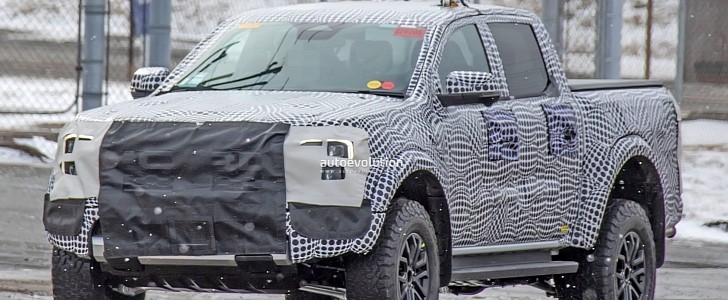It’s been quite some time since the rumor mill started getting our hopes up about the Ranger PHEV. But the inevitable will happen, according to Hans Schep, the head of commercial vehicles at Ford’s European arm.
The only detail Schep told Automotive News Europe comes in the guise of a timeframe: “before 2025.” The all-new Ranger is currently in the final phases of development, which means that our first glimpse of the next-generation pickup will be in 2022 as a 2023 model year for the U.S. market.
Based on the aforementioned timing, the plug-in hybrid would follow suit in 2023 or 2024 at the latest. An unverified report about the Ranger PHEV suggests the 2.3-liter EcoBoost and a transmission-mounted electric motor, a combo that should be good enough for 362 horsepower (367 PS) and 502 pound-feet (680 Nm) of torque. The fuel economy is generously estimated at 3.0 liters per 100 kilometers (obviously including a great deal of electrical assistance), which translates to 78.4 miles to the gallon.
The Bronco is underpinned by a modified platform of the next-gen Ranger, and the Ford Motor Company has already confirmed a plug-in hybrid both directly and indirectly. Given these circumstances, it shouldn’t be too surprising if the 2.3-liter EcoBoost PHEV will first launch in the Bronco.
But Dearborn won’t stop here. Ford has recently showcased the GE2 vehicle architecture that will succeed the GE1 of the Mustang Mach-E, and two of the vehicles that will feature the unibody platform are the Bronco and Ranger. Indeed, it’s a unibody instead of a rugged body-on-frame design.
The GE2 will be joined by the so-called TE1 for truck-based vehicles, including the completely redesigned F-150 Lightning, all-new Expedition, and Lincoln Navigator. Similar to the outgoing F-150 Lightning, both the GE2 and TE1 are expected with a dual-motor option with loads of power.
As for the only area that Ford’s electric boffins need to improve as soon as possible, that would be the driving range. More to the point, 300-odd miles (483 kilometers) from the long-range version of the F-150 Lightning is far off the quad-motor Rivian R1T with the Max Pack (400 miles or 644 kilometers) and tri-motor Tesla Cybertruck (500 miles or 805 kilometers).
Based on the aforementioned timing, the plug-in hybrid would follow suit in 2023 or 2024 at the latest. An unverified report about the Ranger PHEV suggests the 2.3-liter EcoBoost and a transmission-mounted electric motor, a combo that should be good enough for 362 horsepower (367 PS) and 502 pound-feet (680 Nm) of torque. The fuel economy is generously estimated at 3.0 liters per 100 kilometers (obviously including a great deal of electrical assistance), which translates to 78.4 miles to the gallon.
The Bronco is underpinned by a modified platform of the next-gen Ranger, and the Ford Motor Company has already confirmed a plug-in hybrid both directly and indirectly. Given these circumstances, it shouldn’t be too surprising if the 2.3-liter EcoBoost PHEV will first launch in the Bronco.
But Dearborn won’t stop here. Ford has recently showcased the GE2 vehicle architecture that will succeed the GE1 of the Mustang Mach-E, and two of the vehicles that will feature the unibody platform are the Bronco and Ranger. Indeed, it’s a unibody instead of a rugged body-on-frame design.
The GE2 will be joined by the so-called TE1 for truck-based vehicles, including the completely redesigned F-150 Lightning, all-new Expedition, and Lincoln Navigator. Similar to the outgoing F-150 Lightning, both the GE2 and TE1 are expected with a dual-motor option with loads of power.
As for the only area that Ford’s electric boffins need to improve as soon as possible, that would be the driving range. More to the point, 300-odd miles (483 kilometers) from the long-range version of the F-150 Lightning is far off the quad-motor Rivian R1T with the Max Pack (400 miles or 644 kilometers) and tri-motor Tesla Cybertruck (500 miles or 805 kilometers).























